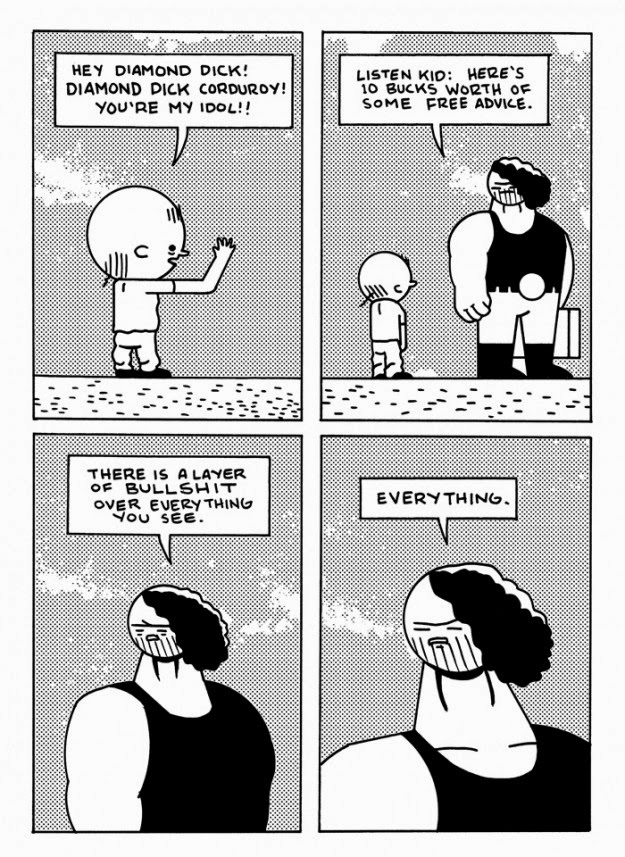Noah Van Sciver, Tinto Press, Denver (USA), September 2013 and February 2014, 144 and 104 full color pages, perfect bound, 5,25" x 8,25", $ 15 and $ 14 each, $ 25 both.
Before I started reading Noah Van Sciver's Weekend Alone and Weekend for Two, I wasn't considering to write a review. It just didn't seem right to me to talk for the first time about the cartoonist from Denver starting from his sketchbooks, publications usually addressed to those who already know the author and his most famous works, as in this case his anthology Blammo and The Hypo, a graphic novel published by Fantagraphics starring the young Abraham Lincoln. But these two little books, published by Tinto Press, have been a pleasant surprise, since they aren't only an authentic reproduction, without mediations or corrections, of the contents of the sketchbooks, but also a stand-alone and funny reading. With a versatility worthy of the best underground cartoonists, Van Sciver alternates sketches, more elaborate drawings, brilliant one-page stories and finished comics. The quality of the illustrations is remarkable and I've especially liked the way in which the color was used in the full-page paintings, spanning a wide variety of subjects, from self-portraits to Popeye, from fake covers of vintage comics such as Secret Origins or House of Mystery to anthropomorphic animals, from female nudes to the star of b-movies Gorgo.
The variety of the drawings recurs in the narrative contents, that line up self-mocking autobiographical experiences, the adaptation of a Dave Eggers' short story, a rabbit with a broken heart (definitely one of my favorites), the cartoon version of a poem by William Knox, Johnny Cash in an existential crisis, Paris in the nineteenth century, mad guys fighting for no reason. In the background, the autobiography remains as the main theme, and if we want to look for a common thread we can find it in the moments of loneliness and emotional distress described here and there. This feeling marks the two books as a sort of journals, in which Van Sciver expresses himself not only as an artist but also as a person, of course always with a taste for irony and paradox that characterizes everything he does.
In conclusion, I have to mention the story that amused me the most, included in Weekend Alone. King of Comic Books sees Van Sciver taking a trip in the past, in the '90s Seattle, when the grunge prevailed in music and the comics scene was ruled by Fantagraphics, a publishing house loved by the author, who dreamed to make a book for them. In the meantime, he reached his ambition with The Hypo, even if here the surprise ending tells a different story...
















